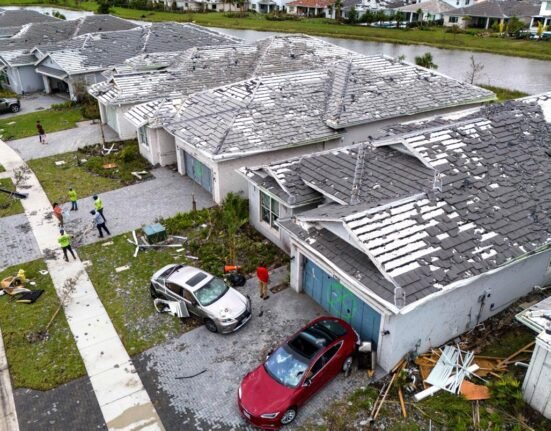
Robert Tann/Summit Daily News
Buying a home in Summit County has never been more expensive.
Data from the Colorado Association of Realtors shows the first-half of 2024 saw the median price for a single-family home rise to $2.4 million, a near 40% increase from that same time last year. If the upward trend continues, it would put 2024 on track to be the most expensive year for single-family homes on record.
Industry experts have mainly attributed the surge to a boom in home sales during the first years of the COVID-19 pandemic, when home buyers fleeing more urban areas flocked to mountain destinations with cash on hand. But another factor could be contributing to the rise in home prices, particularly among luxury properties.
Vacant land sales spiked in 2020, rising to a five-year high between 2018 and 2023, data shows. Many of those properties became the site of custom-built homes that are now entering the residential market.
“Because those properties are in higher demand and because they were recently built, they’re kind of driving that median sale price,” said Dishon Lutz, past president of the Summit Association of Realtors, now called Altitude Realtors.
Prior to the pandemic, Summit County’s home aesthetic was somewhat stagnant — including new construction.
“Typically, mountain traditional architecture is the style most people build to sell in this marketplace,” said Steve Fisher, a Summit County Realtors and Altitude MLS president-elect.
“Recently, there’s been a high demand for more mountain market aesthetics. Summit County was behind the curve, I think, compared to Aspen and Vail in terms of architectural style,” Fisher continued.
That began to change when buyers, taking advantage of an economic downturn in 2020, bought vacant parcels with the intention of building their own home. Realtor data shows the number of vacant land transactions in Summit nearly doubled between 2019 and 2020, rising from 120 to 225.
“People kind of went crazy with buying land and building to hedge against inflation,” Fisher said. “What we say was a huge increase in land purchases and building because the margins for building are much lower than they are today.”
We now have a real estate newsletter. Get market updates and all things short-term rentals in your inbox every week.
Sign up here: SummitDaily.com/newsletter
Land sales have sharply dropped since 2020, with data showing there were just 72 transactions in 2023. For the first half of 2024, ranging from Jan. 1 to June 30, land transactions decreased 19% compared to that same time the year prior, according to Lutz.
At the same time, vacant land inventory is now the highest it’s been since 2020.
“I hope it’s plateauing because it was just on such an aggressive increase for such a long time,” Lutz said.
The reasons are multifaceted but are likely linked to the increased cost of new construction brought on by inflation and supply chain issues. And deciding to buy land remains a complicated and potentially risky venture.
“The first thing that comes to mind is the lack of land we have to build on in Summit County,” Lutz said.
Around 80% of land in Summit County is federal public land under the White River National Forest, according to a county statistic. Towns like Blue River and Breckenridge are nearly built out, with the towns at 91% and 93% of residential development capacity, respectively.
Land becomes further limited when looking at what parcel can support the necessary infrastructure needed for a residence, be it for sewer and water lines or the ability to support a home’s foundation. While some parcels may already include some essential infrastructure, like a well, many do not.
Lutz said it’s crucial that prospective buyers understand the true cost of land if they’re intending to use it for new construction. According to a report of June data from Land Title Guarantee Company, the average sale price of vacant land in Summit County is just over $635,000.
That cost quickly increases when building a home. It’s why, for many buyers, purchasing vacant land is less about being cost-effective and more about wanting to “build what I want, where I want,” Lutz said.
From an investment standpoint, buying land and keeping it vacant also comes with challenges. While the purchase price may be well below that of a home, property taxes on vacant land are roughly quadruple that of a residential property.
“It makes it hard for people to offset that cost,” Lutz said.
It’s why, for those interested in the vacant land market, research is paramount.
“Really the most important thing is for consumers and clients to understand all of the due-diligence involved,” Fisher. “A lot of people have dreams that they want to own land in Colorado, but once they build on it they don’t realize everything that it entails.”







